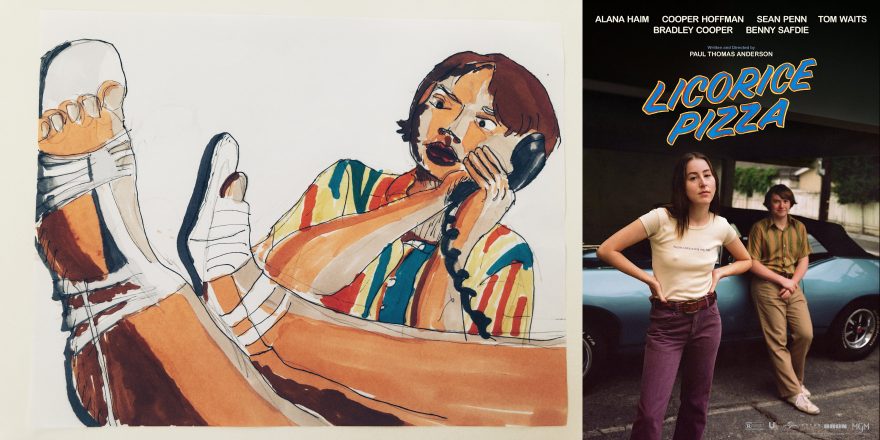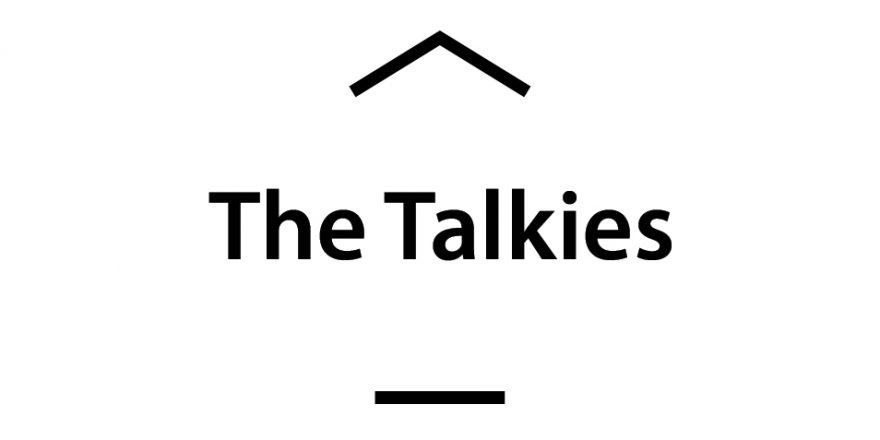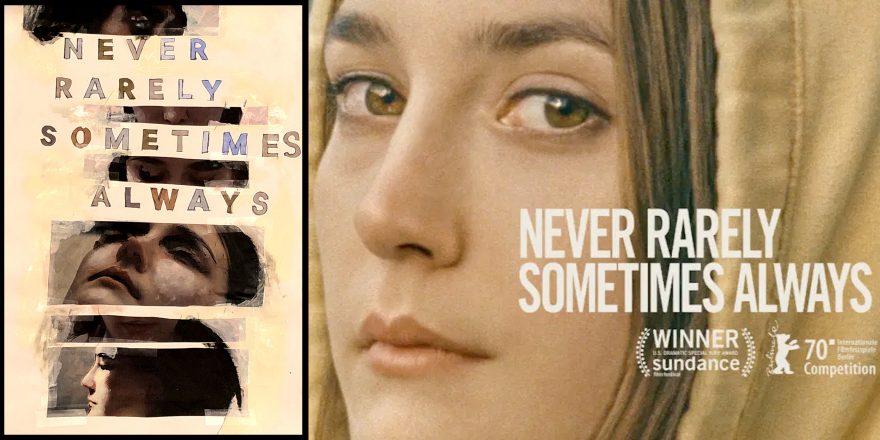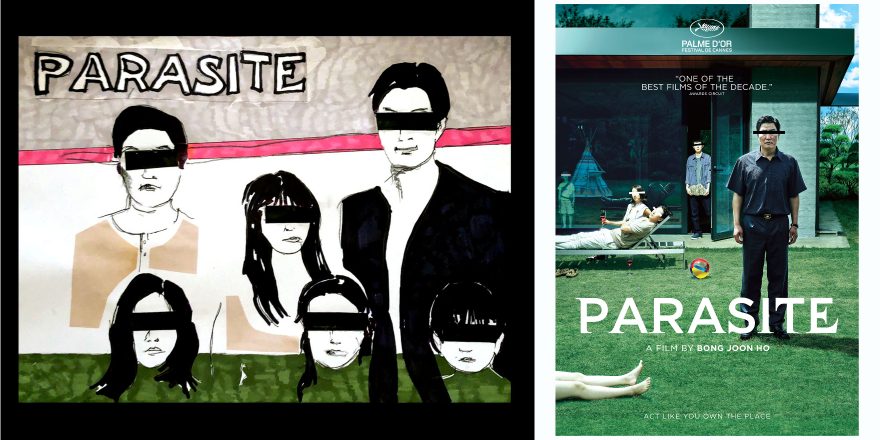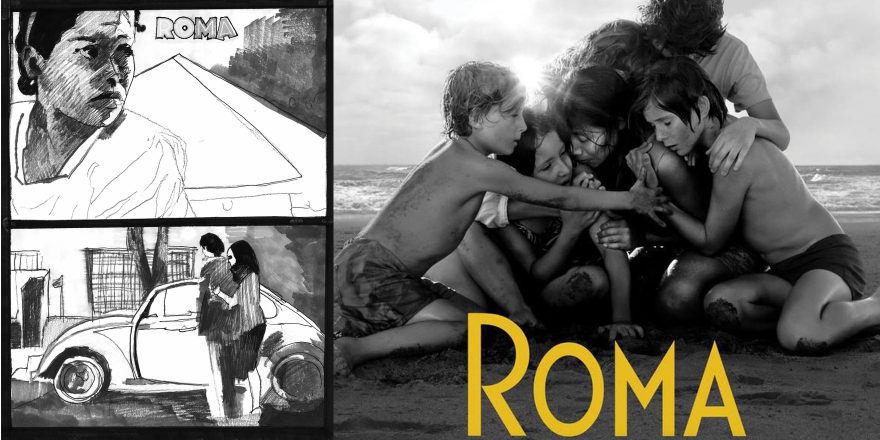Talkhouse Film contributors and a select few friends of the site voted on their favorite movies of 2021. The results of the Talkhouse Film poll are below, showing all the titles that received multiple votes; a selection of individual ballots will be posted tomorrow. Ten points were awarded to first-place films, 9 points were given to second place, etc.
Thanks to all who voted, and to the following contributors, whose wonderful written and graphic responses to the Top 10 films are featured below: Anton Ascher and Rodney Ascher, Anna Bak-Kvapil, Nikole Beckwith, Rod Blackhurst, Zach Clark, Alex H. Fischer and Eleanor Wilson, Taylor Hess, Gillian Wallace Horvat, Ben Hozie, Amanda Kramer, Alix Lambert, Danny Madden, Ryan McGlade, Kent Osborne, Michael Reich, Terrie Samundra, Dash Shaw, Leah Shore, Sandi Tan and Matthew Wilder.
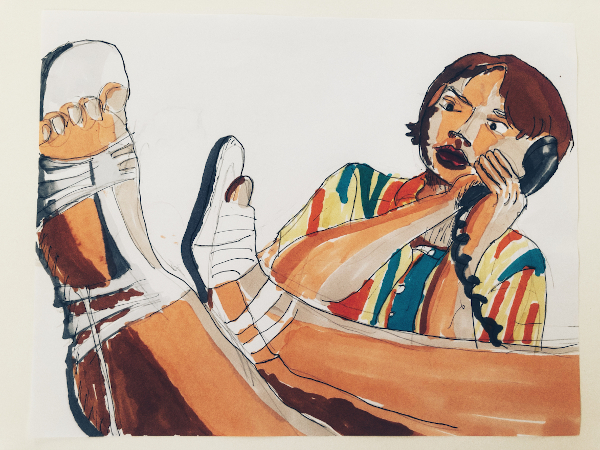
1. Licorice Pizza 171
There was enormous anticipation around PTA’s latest. Al went to see a 35mm showing of Cry Baby in order to sneak a peek of the trailer, which was only showing ahead of 35 mm screenings (and came home raving about both). Once the trailer eventually came out online, I think we watched it about 50 times – to the point of being able to recite it.
We saw Licorice Pizza, the first time, at an advanced screening in New York where PTA, Alana Haim and Cooper Hoffman were there for a Q&A. It was like Christmas morning, a movie gift, and we cried twice each during the Q&A. We saw it again three weeks into its release in Westwood at a regular 2:45 p.m. showtime. Somehow, this screening had even more of a buzz in the air – it was packed out, the audience seemed to be dressed in their hippest rags, and the lobby was humming. It was clear that more than anything we’d seen this year, Licorice Pizza was an event. It was undoubtedly an experience we will always remember – it tapped into a need we all had for something exuberant and simple and free. Like running full speed down the street, and not for exercise.
It’s a movie about a time and a place. It’s about saying fuck it, and fuck off. It’s a road movie that barely leaves the San Fernando Valley. A mixtape. A photo album presented in the living room on a slide projector. It’s a film that feels like it was made by one big extended family. The perfect music video for “Let Me Roll It.” Mostly, it’s a goddamn joy. (Alex H. Fischer and Eleanor Wilson)
Image by Anton Ascher and Rodney Ascher
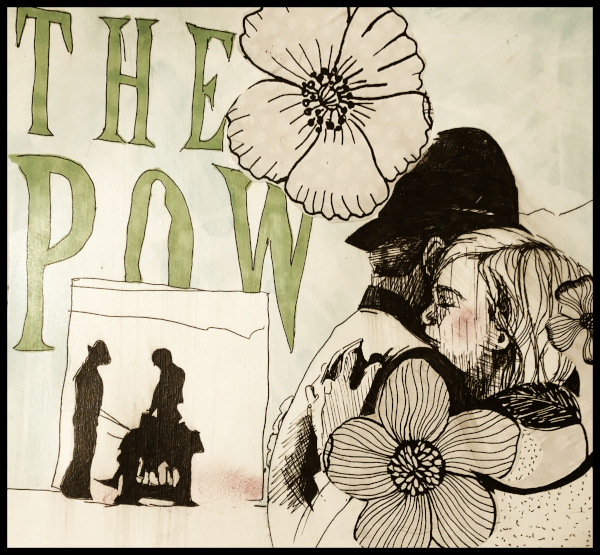
2. The Power of the Dog 167
There are shots in The Power of the Dog that feel seared in my subconscious: Benedict Cumberbatch, transmitting a whole tortured life history in a single glance; the commanding Kodi Smit-McPhee as he rolls a cigarette; Kirsten Dunst, wild with agony. Even as these images reveal powerful truths, a certain mystery is preserved. The performances are striking, no doubt, but it’s how director Jane Campion weaves them together through music, light, silence and space to unveil the layers beneath the layers, and then hint at subterranean layers beneath those layers, that’s most staggering. Masterfully, in shot after shot, Campion excavates the depth of human experience — but not the bottom of it. Consequently, the film leaves me with that extraordinary feeling that only few do: profoundly satisfied and existentially incomplete. It’s the reason this is a movie for the ages, one to watch again and again and again. (Taylor Hess)
Image by Alix Lambert
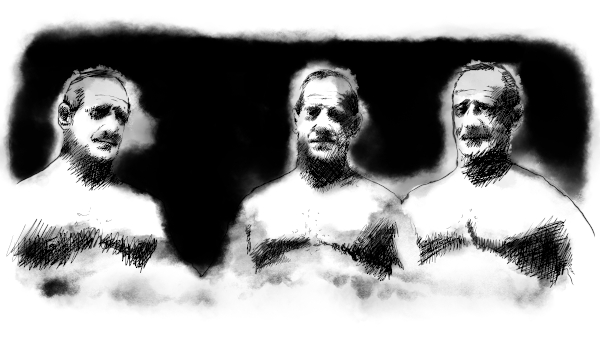
3. Titane 135
The vitriol for this Palme d’Or winner is awe-inspiring. People loathe what they believe is being “said” about the trans experience, the delusions of parenthood, the trauma of birth. Julia Ducournau doesn’t care. Equally titillating and distasteful, Titane is the boldest art contradiction of the year, clashing jolts of the homicidal with sexual frenzy and an unexpected, inescapable tenderness. Finally, a daring revelation of all that the female body can be; I loved to watch the men in my theater squirm uncomfortably as their carnal, libidinous gaze curdled into total gross-out scrutiny. Many had to look away – not when the penetrating Agathe Rousselle breaks her own nose on a public restroom sink, but when she wraps her growing pregnant belly and oil-oozing nipples into a painful, gnarly bind. Vincent Lindon – who I thought could never be better than as the outrageously committed Marc in La Moustache – offers his director a myriad of gifts as he embodies the double trouble tritest of all tropes: the Aging Addict and the Bereft Daddy. There’s much exhilarating mystery to the interactions between these two performers, and so much affection, and such impressive silence. Here is the year’s most sacred and profane love. American filmmakers should lament the fact that we don’t have a homeland peer willing to be this dazzlingly punk, deeply disturbing, genuinely shocking, commanding and cool. (Amanda Kramer)
Image by Leah Shore
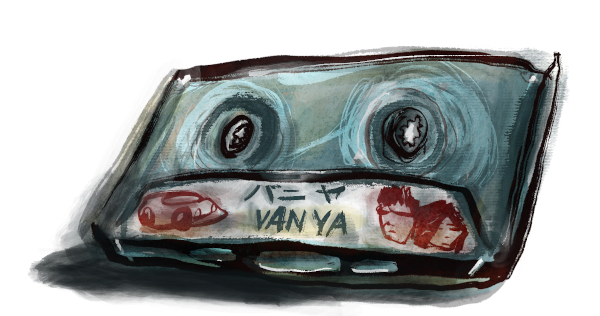
4. Drive My Car 112
Drive My Car was the last film I saw in a theater in 2021. It was a late-night screening and it had been raining in L.A. for days, a perfect time to see a film. I had intentionally read very little about the movie, but knew I was in for three hours in the hands of director Ryusuke Hamaguchi, a filmmaker whose choices allowed me to completely sit inside the film, which gracefully unfolded layer by layer. There’s a deep vulnerability to the story, with little camera movement and shots that linger on the characters. No bells and whistles, no smoke and mirrors, no chaos or melodrama. Methodological and meditative. It was so nice to be given honesty in raw cinematic form. The use of a story within a story with our protagonist Yusuke’s late wife’s narration inside his beloved red Saab and Chekhov’s play, so perfectly mirrored the unfolding drama of the actors and theater director off stage.
The story explores the complexities of grief and love, using art as a powerful tool for coping with a loneliness and sorrow which is asking to be embraced. I was not expecting the personal cathartic experience that unraveled on screen before me. I had lost my father exactly a year earlier, a year where grief seemed to move in all around me and refused to leave. It was not only mine, but there was also a collective grief which persisted, much like for the characters in the film. The parallels to my father, who loved Chekhov, had a cherished old VW Karmann Ghia (like Yusuke’s red car), and revered the transformative power of literature, struck me as Yusuke finally breaks under the weight he’s been carrying. Misake, the young woman who is his driver, echoes that the living are left to make peace with the dead along with their own actions. Like Misake’s relationship with her mother, my relationship with my father was tumultuous and rocky, with so much left unsaid. Drive My Car made me feel like I had been gently handed a gift of permission to unapologetically pause in the dark and tangled weeds of grief. (Terrie Samundra)
Image by Danny Madden
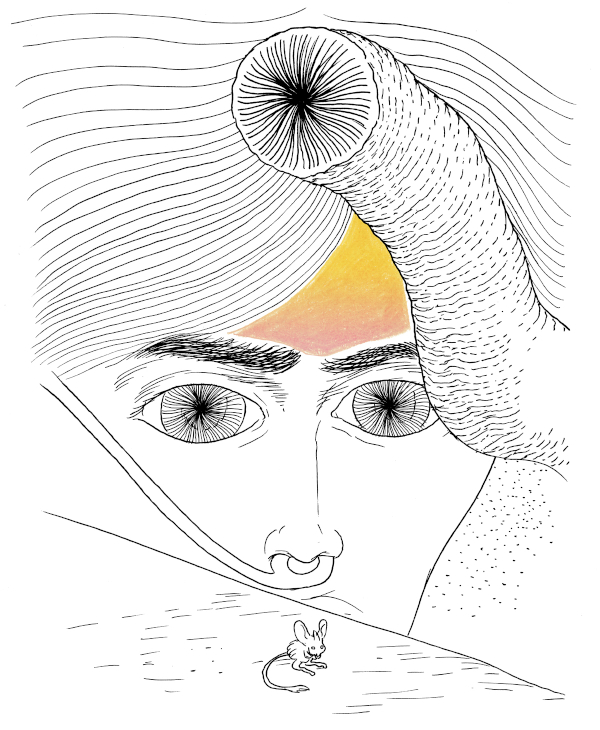
5. Dune 90
Denis Villeneuve is a master filmmaker and Dune is a masterpiece. I’ve never read the book. I’ve never seen the other version(s). Those don’t really interest me. What does make me put Villeneuve’s film on a pedestal are the same elements and reasons I put Sicario, Blade Runner 2049, Arrival and Prisoners up there as some of my all-time favorite films (and the best of their release years, too): total cinematic experience, craft-first filmmaking, and flawless execution. Time and time again, Villeneuve creates works of art (every frame could hang on a gallery wall) and grand worlds (of all scales) dripping with tone, emotion, relatable humanity and profound intimacy. And most importantly, Villeneuve’s films remind us that we need big screens and that cinema needs auteurs. Visionary filmmakers like Denis, with confident voices who make films, not content. Plus, by all accounts he’s a nice guy. Our industry could use a lot more of that. (Rod Blackhurst)
Image by Dash Shaw
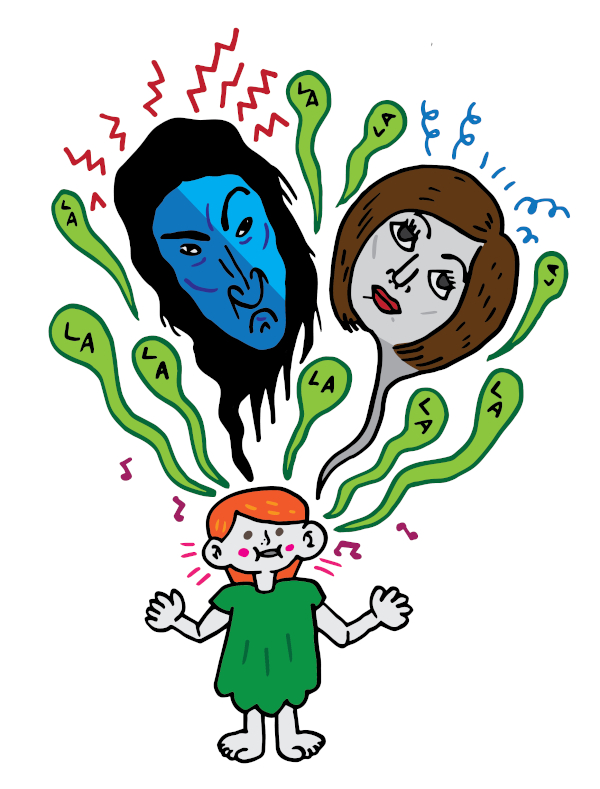
6. Annette 85
I feel connected to Annette in a deep and personal way and that is because I feel intimately connected to Sparks. You see, in pre-COVID times, the keyboardist, Ron Mael, went to the same gym as me. The YMCA in Hollywood (since closed) was a strange little place that was mainly populated by older Russian men and homeless people. And then there was this Sparks brother. He stuck out amongst the others. I would see him almost every day in his small pre-war glasses and funky little Hitler mustache. It was mesmerizing to see him on the elliptical machine, lanky limbs flopping everywhere. Often, I would sneak photos of him when he would do the chest press. I have long been a big Sparks fan and so getting fit with him was quite a thrill.
When The Sparks Brothers documentary came out earlier in the year, I braved the theaters to see it on the big screen. The documentary brushed upon Ron’s daily workout routines, but sadly did not mention the Hollywood YCMA. Still, the documentary got me so damn excited to see their first full-fledged musical. Bonus points that it was to be directed by Leos Carax, who is probably my favorite French filmmaker of the past few decades.
I saw the L.A. premiere of Annette at the Hollywood Forever Cemetery and it was a truly intoxicating experience. First off, Sparks played a full set before the movie, so that was cool. They gave out green bathrobes like the one Adam Driver’s Henry McHenry wears in the movie. (The bathrobes are very comfortable and fun to wear while singing a verse of “May We Start?” after a shower.) And then the movie itself was like nothing I had ever seen before. A singing creepy puppet child! A cunnilingus-infused musical number! I think I loved it, but I couldn’t totally tell at the time. Regardless, the best part of it all was when I ran into my gym buddy Ron outside the porta-potties. Los Angeles can be such a magical place sometimes. I said hi to him, but he didn’t seem to recognize me.
Annette has proved to be a cult favorite of the year. Some people hate it and that’s fine, but some people really revel in the weird wildness of this tragic movie opera. I found myself talking a lot about Sparks with friends and I would bring up the gym connection quite often. On one such occasion, I showed my friend the picture of Ron Mael at the chest press machine. He laughed, not at my cherished photo, but at me. He was a hardcore Sparks fan and was quick to point out all the inconsistencies in my gym buddy and that of photos the “real” Ron Mael. Maybe my gym buddy was just some weird Russian homeless guy and not in Sparks at all? Maybe this Hitler-mustached man that I snuck photos of at my gym did not in fact compose the score to my favorite movie of the year?
The movie Annette is kind of like my gym run-in with a possibly fake Ron Mael. It’s exciting and inspiring, and even though it might not be what you imagined or expected, it will be a memorable experience that you will cherish in your heart and tell your friends about for years. (Michael Reich)
Image by Zach Clark
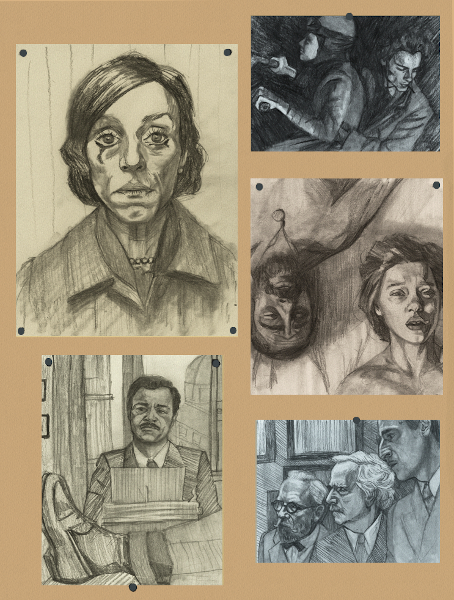
7. The French Dispatch 84
Is it possible for a movie to be the picture that sums up its moment …unintentionally? After a Christmas Day rewatch of The Hateful Eight, which has gone from “zany romp” to “letter-perfect Polaroid of 2021” in six short years, I am tempted to ask: Is there actually any other way to do it? Wes Anderson at times (as in the beyond-tasteless Grand Budapest Hotel) can suggest that aestheticism is just an extreme form of mental illness. But in The French Dispatch, he ramps up his form of A.D.D. to a speed that crashes through walls – and the result is a picture that is perfect Wes, yet as aggro and alienating as Godard’s Le Gai Savoir. Set in a ramshackle outfit that is like a slow-motion clickbait farm, it skips or caroms from one shard of narrative to another, breaking viewer neckbones with revisions and alternate takes as the master story often crumbles into an inferno of group violence – you know, just like us! Dispatch is a bejeweled expression of the auteur’s alternate universe and a hair-raising dispatch from our own … Or, as some Vulture or IndieWire dingbat might say, “The movie we didn’t know we needed now!” (Matthew Wilder)
Image by Anna Bak-Kvapil
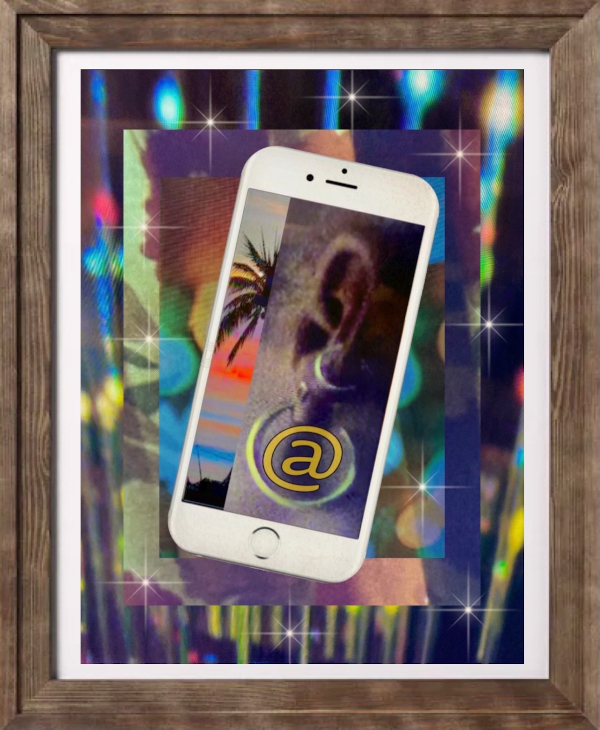
8. Zola 83
I was so excited to see this film: a dark comedy from a female director, co-written with a transgressive playwright, the first film to be adapted from a Twitter thread, and starring Riley Keough! And yet … would it be another brilliantly marketed A24 film coasting on its notorious premise and unable to contribute anything new to the concept? Would it even be possible in this artistically repressed climate to make a subversive film about female sexuality and complicated relationships between women? Fortunately, Zola delivered on its promise and dazzled with its refusal to be pinned down to one tone, one narrative direction or a single “likable” character. As much as Zola’s passivity is maddening, Janicza Bravo commits to her vision and I was grateful to see her swing for the fences and knock it out of the park. (Gillian Wallace Horvat)
Image by Ryan McGlade
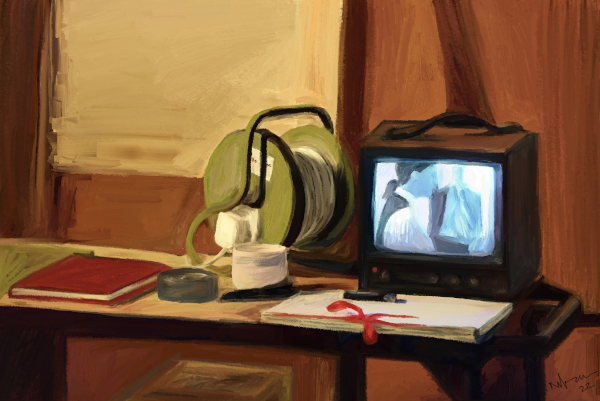
9. The Souvenir Part II 71
Imagine having the balls to craft a follow-up to a personal film that’s even more richly solipsistic and minutiae-laden than 2019’s The Souvenir – well, Joanna Hogg’s done that with the second half of her unsentimental, darkly hilarious study of a young woman’s creative and sexual coming-of-age in Thatcher’s Britain. Honor Swinton Burne – real-life college student and daughter of Hogg’s BFF Tilda Swinton – plays film student Juliet with the kind of naturalness and searching intelligence that every film journalist is insisting Kristen Stewart has; in a just world, Swinton Burne would be a clear contestant for the year’s top acting awards. But I suspect both she and Hogg are chasing something more elusive. It is so very difficult to dramatize any creative process in a movie and have the viewer give a shit, let alone portray a young woman not yet fully formed, trying to chisel herself into being using unfamiliar tools. Not since Jane Campion’s An Angel at My Table (still Campion’s best film, I reckon) have I seen any film that manages to capture the hems and haws of self-doubt and the miniature-scale megalomania that must overtake the female artist-in-training. How does the nice young woman conditioned by her upbringing to be gracious and obliging with her “thank you’s” and “sorry’s” absorb a bit of ruthlessness? The long tail of Juliet’s ill-fated obsession with posh-mannered druggie Anthony (Tom Burke), the storyline which gobbled up most of Part I, manifests itself in Juliet’s Part II amorous, creative and material choices (note the suddenly fancy clothes), and ultimately in the making of her thesis film where those amorous, creative and material choices all come together. It doesn’t matter how clumsy or how awkwardly ambitious that film is. What’s at stake is how we’ve watched Juliet learn to spin experience into work. She’s on her way, even if – informed as we are by Hogg’s own journey as a filmmaker – it’ll be a long, hard road ahead. (Sandi Tan)
Image by Nikole Beckwith (“Art imitating art imitating life imitating art imitating life”)
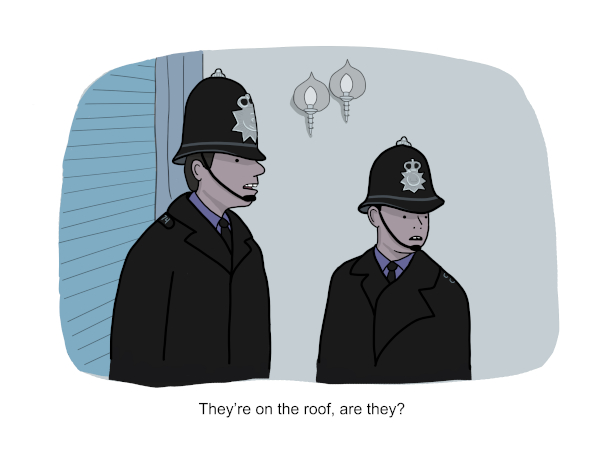
10. The Beatles: Get Back 70
Get Back is more than just a treasure chest for us fab fanatics (although it is that, too); it’s perhaps the best movie I’ve seen about the work that goes into rock and pop creation. It shows the Beatles’ exhilarating but often tedious process of figuring out the proper arrangement for their songs, but also sheds light on the mysterious alchemy that happens in groups when players with different temperaments and philosophies come together. My favorite scene involves a discussion about Paul’s home movies of the band’s 1968 meditation trip to India; Paul tells the other three that after a recent viewing, he was surprised to see the others, especially John, acting stiff on screen. He muses that John doesn’t seem to have his usual playful, sardonic, or distinctly “Beatlesque” Northern attitude in the footage. His performance, next to their guru the Maharishi, Paul thinks, lacks “naturalism.” John seems to agree until George interrupts saying that the entire reason they went to India was to figure out what their identities could become, suggesting that one’s mode of being is never fixed (at least until you achieve something like oneness with the universe, in his point of view). Paul, despite recognizing George’s prickly subtext, acknowledges the wisdom of this statement. It’s a heavy moment, but John quickly both deflates and elevates the point by busting into a cover of “Act Naturally,” a Buck Owens country song they recorded with Ringo on vocals in 1965. The other three immediately join in on the tune. It’s a hilarious and joyous turn. The scene not only shows the Beatles wonderful shared sense of humor, but also seems to suggest that the songs they’ve played in the past genuinely do make up their identities. For a musician, Peter Jackson seems to be suggesting, you are what you play. (Ben Hozie)
Image by Kent Osborne
11. The Card Counter 68
12. Bergman Island 59
=13. The Last Duel 56
=13. The Lost Daughter 56
=15. Judas and the Black Messiah 51
=15. King Richard 51
17. Pig 50
=18. Red Rocket 48
=18. The Green Knight 48
=18. West Side Story 48
21. Benedetta 47
22. Memoria 46
23. No Time to Die 43
=24. Summer of Soul 40
=24. The Worst Person in the World 40
=26. Flee 36
=26. Spencer 36
=28. Last Night in Soho 35
=28. Petite Maman 35
=30. Bad Trip 32
=30. C’mon C’mon 32
=30. Wheel of Fortune and Fantasy 32
33. Parallel Mothers 30
34. Old 29
=35. Quo Vadis, Aida? 26
=35. Shiva Baby 26
=35. Shang-Chi and the Legend of the Ten Rings 26
38. About Endlessness 24
=39. Days 23
=39. Ema 23
=39. The Killing of Two Lovers 23
=39. tick, tick…BOOM! 23
=43. Ascension 22
=43. Lamb 22
=43. The Hand of God 22
=46. Belfast 21
=46. The Night House 21
48. The Rescue 20
=49. Passing 19
=49. The Velvet Underground 19
=51. A Film About A Father Who 18
=51. CODA 18
=51. Don’t Look Up 18
54. Barb and Star Go to Vista Del Mar 17
=55. Can’t Get You Out of My Head 16
=55. Kajillionaire 16
=57. Fear Street Trilogy 15
=57. A Night of Knowing Nothing 15
=59. Bad Luck Banging or Loony Porn 14
=59. Cyrano 14
=59. Terra Femme 14
=59. Val 14
=63. Nightmare Alley 13
=63. Swan Song 13
=63. Holler 13
=63. Nomadland 13
=63. Test Pattern 13
=68. A Quiet Place Part II 12
=68. All Light, Everywhere 12
=68. East of the Mountains 12
=68. First Cow 12
=68. Old Henry 12
=68. Saint Maud 12
=68. Some Kind of Heaven 12
=68. The Tender Bar 12
=68. The Tragedy of Macbeth 12
=77. Eternals 11
=77. Procession 11
=77. The First Wave 11
=77. We’re All Going to the World’s Fair 11
=77. Zeros and Ones 11
=82. El Planeta 10
=82. Wife of a Spy 10
=84. Censor 9
=84. Malcolm & Marie 9
=84. Moxie 9
=84. The Mitchells vs. the Machines 9
=88. Bo Burnham: Inside 8
=88. Ghostbusters: Afterlife 8
=88. In the Heights 8
=88. New Order 8
=88. The Matrix Resurrections 8
=88. Cruella 8
=94. Azor 7
=94. Spider-Man: No Way Home 7
=94. The Beta Test 7
97. France 6
=98. Great Freedom 5
=98. Project Space 13 5
=98. Undine 5
=101. House of Gucci 3
=101. Roadrunner: A Film About Anthony Bourdain 3
=103. Lapsis 2
=103. Sweat 2



